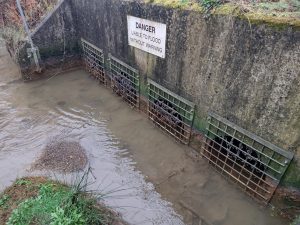Annual data reveals the extent of sewage in British waters
Today, the Environment Agency (EA), Scottish Environment Protection Agency (SEPA) and Natural Resource Wales (NRW) have released annual data which reveals the extent of sewage discharged across Britain in 2022. Despite the reputation of water companies being in tatters and the state of UK water quality making frequent headlines – there’s little evidence to suggest they’re cleaning up their act. The figures are shocking, the transparency is questionable, and the accountability is non-existent. It’s a broken system and we’re sick of it.
What’s the Damage?
Last year, 301,091 sewage spills were reported discharging in England, 14,008 in Scotland and 74,066 in Wales. Sewage discharged for an eyewatering 2.4 million hours across England, Scotland and Wales. Despite these figures showing a slight reduction from 2021, it’s completely unacceptable that our waterways are still being treated as open sewers on a regular basis.
Whilst the dry summer may have relieved some pressure from the sewage system in 2022 and contributed to a reduction in discharges, this data shows almost 400,000 discharges of sewage surged into our precious blue spaces last year. This should not be happening.
Extreme rainfall events are expected to increase over the next decade due to climate change, which means water companies urgently need to reduce their reliance on sewage overflows. These pipes should only be discharging sewage in “exceptional circumstances”, in periods of heavy rainfall. But we know – and the data shows – that water companies use these overflows for the wrong reasons and far too often.
Understanding the data
Regulators in England, Scotland and Wales require water companies to submit annual data about their storm overflows. These annual event durations monitor datasets (EDM data), collate information from the water companies about activity from their overflows. Northern Ireland is not required to produce the same data and falls far behind the rest of the UK for data monitoring.
Water companies use Event Duration Monitors to determine when a discharge starts and stops. Worryingly, these monitors are unable to determine the volume of water being discharged. Scotland is the only water company that provides volume information, logging over 173 billion litres in the last 5 years.
Surfers Against Sewage provide real-time sewage discharge notifications through our Safer Seas and Rivers Service app. This information is sent to us by water companies and informs us if there is a sewage discharge impacting a popular location. Despite holding the only UK-wide real-time data for sewage discharges, we are only able to report on a fraction of events due to the limited locations available. In addition to this, the data sent to us means we report spills differently from how the regulators present the totals in their data. The EA and SEPA generate figures after moderating the data to align with their definition of a spill. We are unable to do this in real time which is largely why the two sources of information generate different figures.
The regulators review moderated information, a year on from the events, self-reported by the polluters and with little knowledge about the details of each event and with incomplete datasets. How can they properly hold water companies to account for their pollution with such incomplete reporting standards in place?

Water companies with a clean record
There are none. There is not a single water company with a clean record, in fact, even Severn Trent who received an environmental rating of 4 stars still discharged 44,765 times for at least 249,116 hours in 2022.
Severn Trent has shown some recent improvements to their monitoring in the last year, which is starting to reveal the true extent of their practices. The data exposes over 2,500 spills into the Severn last year, for more than 20,000 hours. United Utilities continue to be the top polluter, with 425, 491 hours reported from almost 70,000 discharges. Despite the reduction, we’re not seeing results fast enough. Monumental amounts of sewage pollution continue to enter our waterways and are destroying the future of our blue spaces.
Sewage Transparency
The ambiguity around sewage discharges is murky, to say the least. Transparency barriers have been in place for decades and whilst we’re finally starting to see the bigger picture, there are plenty of dirty secrets still lurking beneath the surface.
There is now a government requirement that all overflows must have EDMs installed by the end of 2023 as set out in the Storm Overflow Reduction Plan. Unfortunately, successful reporting worsened last year in England with 16.4% of sewage overflows reporting less than 90% of the time this year. In practical terms, this means each of these overflows went completely unreported for at least a month when potential discharges spewed unknowingly. Do you trust your water company practices enough to be kept in the dark? What are we not seeing?
The data submitted should be the catalyst for environmental action and yet, year after year, the same data comes to light and very little action is taken to investigate the widespread and blatant bad practices of water companies.
Take action
The numbers speak for themselves. Despite ongoing pressure to sort this out, Water Companies are still discharging an incomprehensible amount of pollution into our blue spaces. And what’s more? They’re profiting from it.
Instead of investing in desperately needed infrastructure and transparent monitoring, water companies rewarded their CEO’s with £16.5 million and paid out £958 million to shareholders in dividends.
Sign our petition to help us expose this #DirtyMoney scandal and stop the #FatCatSewerRats once and for all.
Click here to sign our petition
